1930 Wheat Penny Coin Value: How Much Is It Worth?
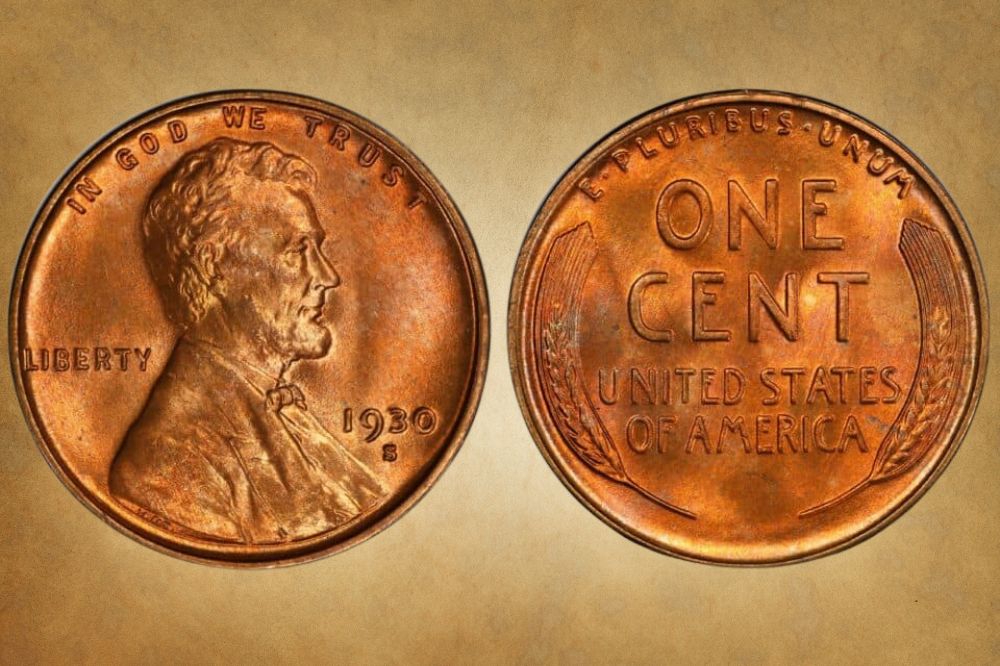
1930 marked the end of the Roaring 20s and early days of the Great Depression, following the Stock Crash of 1929. It was a tough time for the average person, making pennies both extremely precious and almost worthless, because you couldn’t spare any … and they could barely buy anything! Today, collectors love them! Let’s explore the 1930 Wheat Penny Value.
1930 Wheat Penny Value Chart |
|||||
| Mint Mark | Good | Fine | Extremely Fine | Uncirculated | Mint State |
| 1930 (P) No Mint Mark Wheat Penny Value | $0.17 | $0.28 | $1.42 | $6.64 | $11 |
| 1930-S Wheat Penny Value | $0.22 | $0.33 | $2.00 | $11 | $13 |
| 1930-D Wheat Penny Value | $0.22 | $0.33 | $2.81 | $13 | $31 |
1930 Wheat Penny Value Guide
The mint mark is important to collectors because many numismatists aim to collect a full set, including a sample from every mint. But some mint locations made fewer coins so they seem rarer and fetch higher prices. This is especially true for collectors trying to fill a coin card or coin book, so let’s appraise the 1930 Wheat Penny Value according to the minting locations.
1930 (P) No Mint Mark Wheat Penny Value
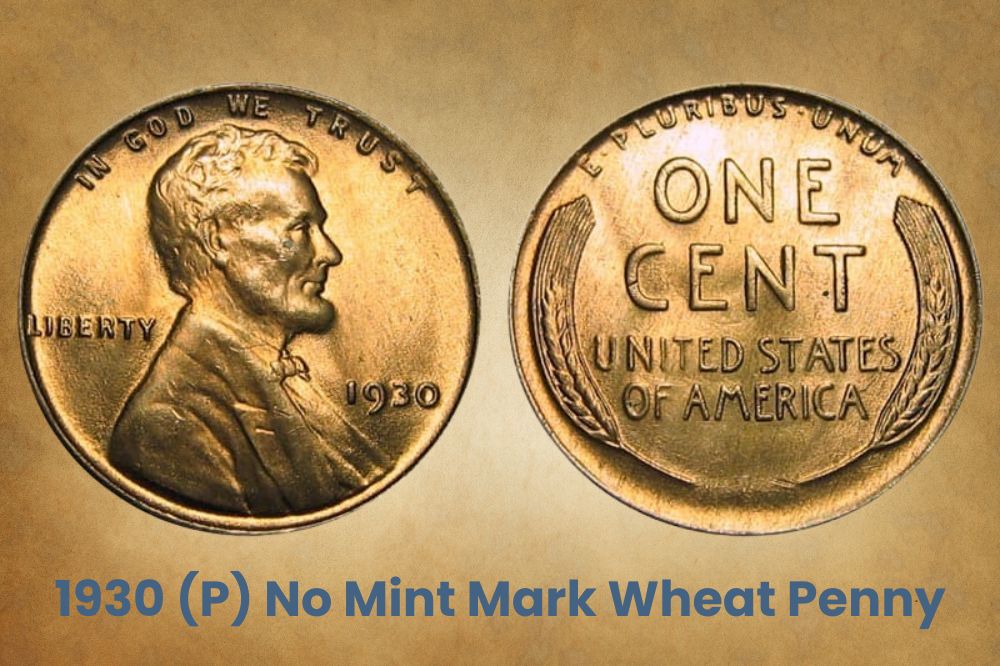
In 1930, the Philadelphia Mint made 157,415,000 Wheat Pennies without mint marks. In MS 67, the standing record was $10,925 in May 2005. But in November 2022, it’s just $1,925.
1930-S Wheat Penny Value
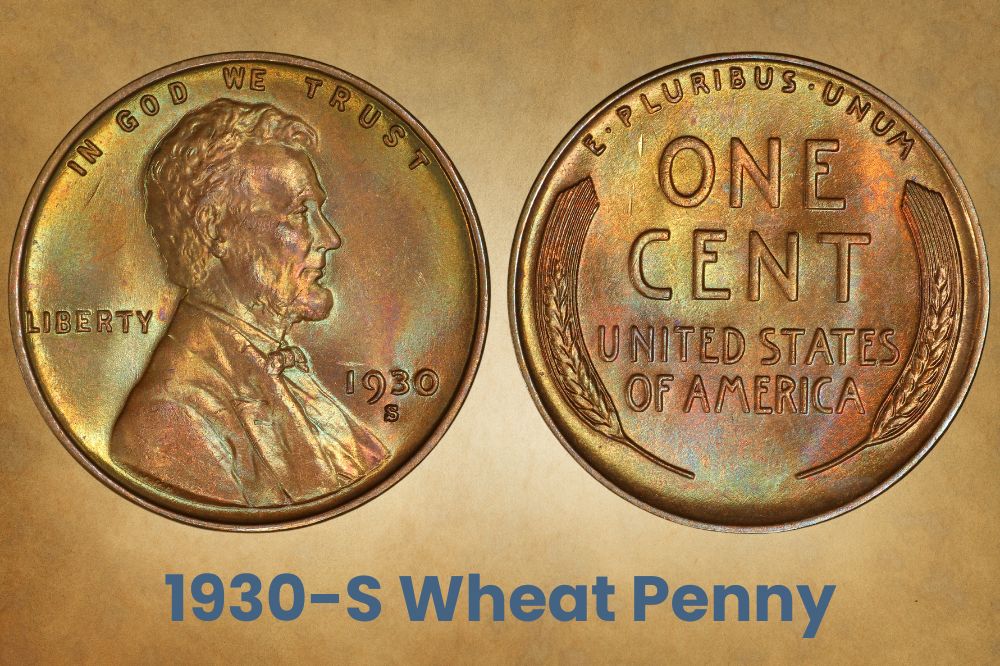
The San Francisco Mint made 24,286,000 Wheat Cents in 1930. In January 2004, an MS 67 sample went for $33,350, the current sales record. In October 2022, that’s down to $1,680.
1930-D Wheat Penny Value
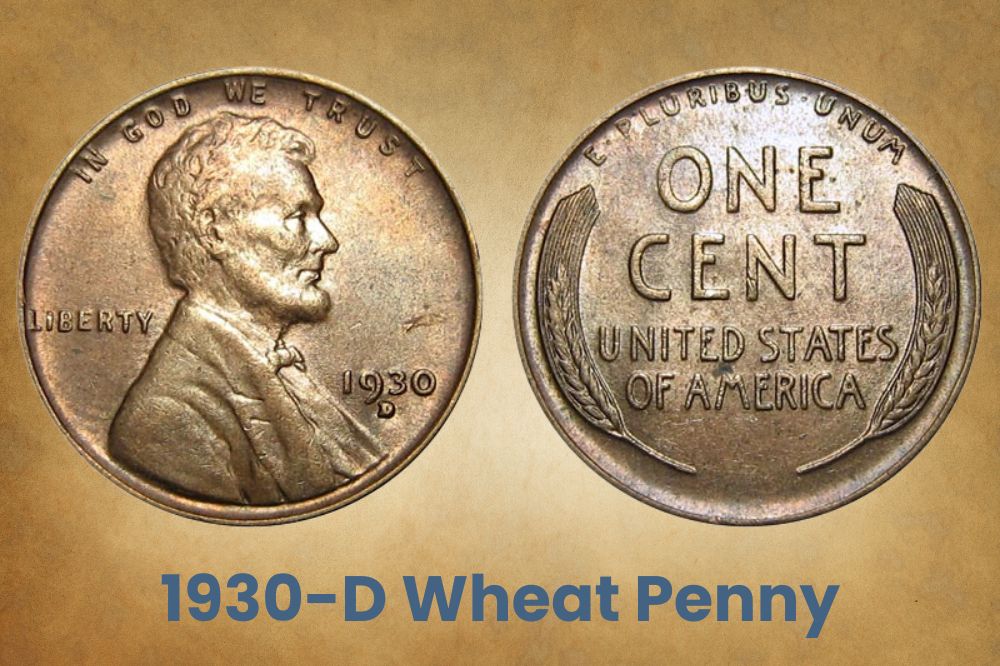
1930 saw 40,100,000 Wheat Pennies coined at the Denver Mint. The auction record for an MS 67+ RD was $33,600 in October 2020. But an MS 67 RD was only $6,011 in March 2022.
1930 Wheat Penny Errors
Coins are made by reducing a large design into a prototype, which is then worked into a master hub. This master hub becomes the template for a working hub, which then forms the working hub, and then the working dies. These working dies are the final stencil that stamp heated planchets to make coins. And each of these minting steps involves at least two strikes.
If the metal moves at any stage, you can get doubling, tripling, or even quadrupling errors such as off-centers, QDOs, or DDRs. You can also find scenarios where a coin is struck on a planchet with the wrong size, metal mix, or denomination. And each of these mint mistakes imparts a specified value to the coin. So let’s check out some common errors on the 1930 Cent.
1930-D Wheat Penny D/D FS-501 RPM
Until 1989, mint marks were placed manually while the other features of a coin were machined using the coin press. And an RPM or re-punched mint mark is a doubling error that happens when the hand-punch shifts slightly, placing the second or third mint mark at a slightly different spot. RPMs can be worth $150 in AU 53 and up to $3,000 in MS 65 RD.
1930-D Wheat Penny D/D FS-502 RPM
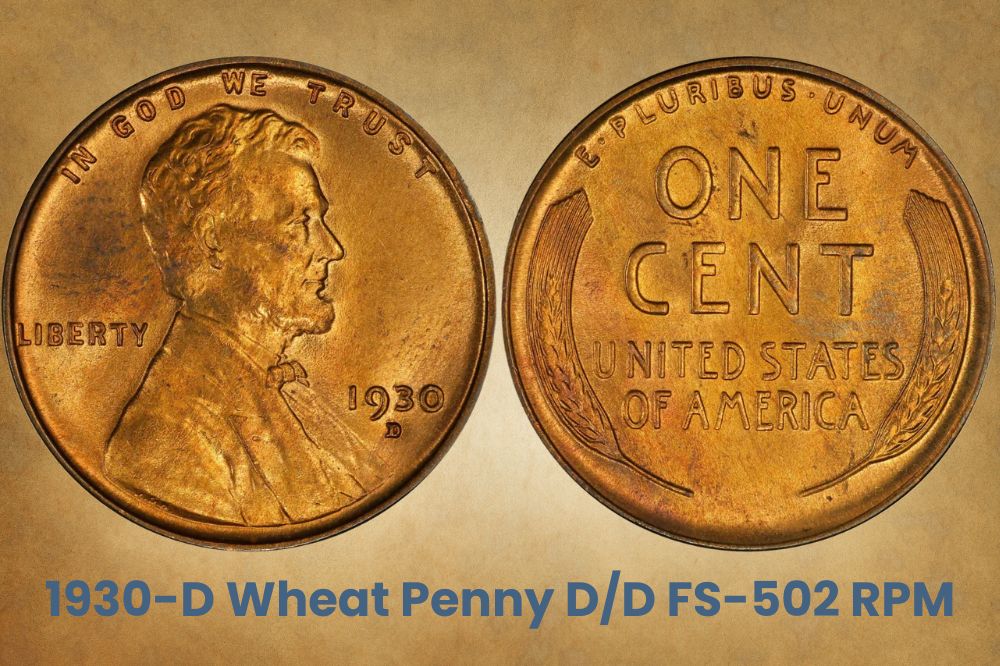
You can often find more than one RPM variety in a given year. And errors that are recorded within a month of any coin’s release are listed as FS for First Strike. The earlier RPM was an FS-501, and this one is an FS-502. Also, RPMs are listed as D/D (D over D), S/S (S over S), etc. This RPM variety is in the same price range, so $150 in AU 53 and $3,000 in MS 65 RD.
1930-S Wheat Penny S/S Error RPM
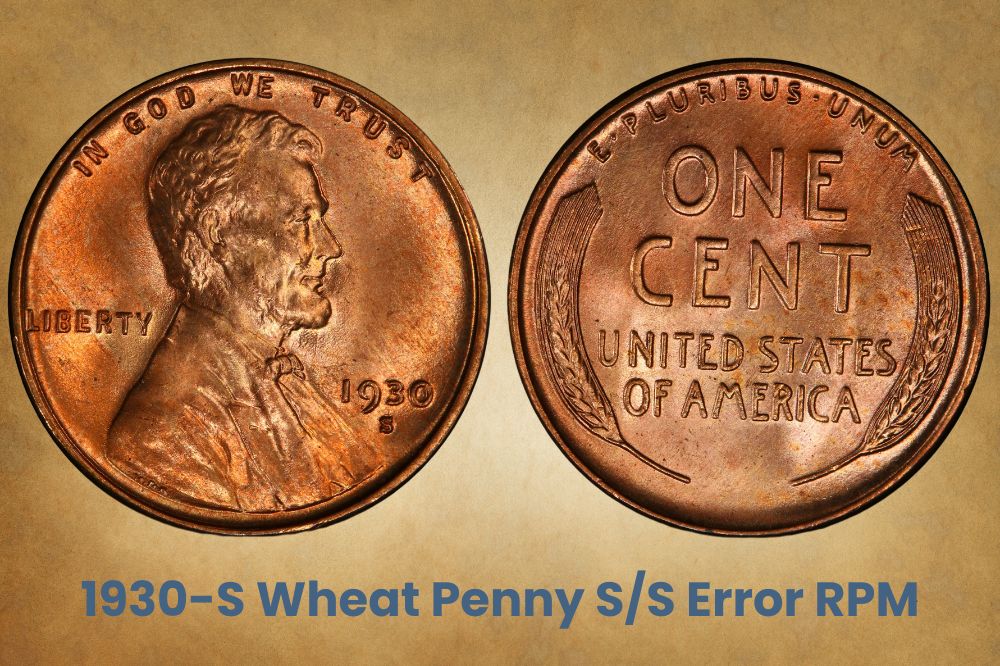
Over the years, the San Francisco Mint built up a reputation for making high-quality coins. It’s why starting in the late 1960s, they switched over to making proof coins exclusively, and even in non-proof years, their coins earn a premium. Oddly, 1930 is one of the few years when D coins cost more than S coins. An S/S is worth $60 in AU 53 and $200 in MS 65 RD.
Related Posts: 16 Most Valuable Wheat Penny Errors
History of the 1930 Wheat Penny
The 1930s were full of social and financial turmoil, so not a lot of people were keeping coins for profit or pleasure. That makes it harder to find high-quality pennies from this year. It also means if you do find any mint-state coins from the 1930s, they’ll be worth good cash, and error coins are worth even more! Let’s dig into the history of the first presidential coin.
In the early days of our so-called American Experiment, we avoided following the practices of the British Monarchy because we wanted to create a democratic state. So our 1st president, George Washington, refused to be placed on US coins and advocated against his successors doing so. Instead, American coins were graced by symbolic images depicting Lady Liberty.
These images were mostly abstract. But even when they were based on an actual model like Anna Willess Williams or Teresa de Francisci, the portraits weren’t meant to be recognizable. This was a matter of national modesty, but it also served a practical purpose. Since the model didn’t need to be identified at a glance, the artists didn’t need as much facial detail or texture.
As a result, older coins looked more two-dimensional, which meant they didn’t over-stress the expensive dies that were used to mint them. But that was before Theodore Roosevelt’s coin beautification project. During his term as the 26th US President, he asked the mint to make prettier coins with artistic merit. He especially liked coins with high relief and depth.
Charles Barber’s Changes to the Lincoln Cent Design
To facilitate this, Roosevelt invited external artists starting with his friend Augustus Saint-Gaudens. And by the time the mint got to redesigning the penny, Victor David Brenner had taken over the task. He presented several sketches and mint officials selected his depiction of Abraham Lincoln, the 16th US President. Naturally, Abe needed to be instantly identifiable!
This meant the portrait on the coin had plenty of facial features, strands of hair, distinct cheekbones, and a recognizable brow. All this gave the coin a photographic effect, and it was, in fact, built off a picture taken at Mathew Brady’s studio. But while the resulting coin was gorgeous and distinct, those points of high relief presented unwanted challenges at the mint.
The coin needed additional strikes to make sure all the details remained identifiable as Abe Lincoln. And all those extra strikes meant dies wore out faster, needed to be replaced sooner, and therefore, cost the mint more money. The Chief Mint Engraver, Charles E. Barber, tried to solve some of these issues. Remember that coin prototypes are often made in a large scale.
So while reducing the coin to its actual size, some detail can get lost, and when Brenner protested, Barber sent the Lincoln Cent to an external silversmith. More expense for the mint. Then, both Charles Barber and Frank Leach (the Mint Director) felt Lincoln’s head was too close to the coin rim, and that would unduly punish the dies. They asked Brenner to fix it.
When he dilly-dallied, Barber adjusted the portrait himself, which left excess negative space at the top of the coin. They fixed this by adding the motto In God We Trust, which explains its odd positioning. For reference, all other US coins placed this motto further down. Luckily, the back of the coin presented less drama, since Brenner used a simplified French concept.
French Influences on the Lincoln Wheat Penny
His initial sketch had two tree branches, just like French silver currency. But when Leach objected to this blatant plagiarism, Brenner changed the tree branches to a pair of durum wheat stalks. This was deemed acceptable, and the low relief of the two wheat sheaves was seen as satisfactory by mint officials. That just left the matter of the designer’s signature.
You see, before Saint-Gaudens, all coins had been designed by in-house mint engravers. And since it was part of their salaried job, they didn’t need – or want – much recognition for their depictions. So they would engrave a subtle signature at the portrait’s cut-off. But commercial artists needed to advertise their expertise for future commissions, so theirs were prominent.
It’s an issue that came up with several other coins, but on the Lincoln Cent, this matter was particularly troublesome. Just days after the coin was released, mint officials, journalists, and members of the public all complained that Brenner’s initials were too visible on the coin. This must have surprised him because he had earlier engraved his whole name on the coin.
So as far as he was concerned, he had pulled back and compromised! Two solutions were offered. The mint could replace his VDB with a smaller B. That would take two weeks, and Barber objected because his earlier Barber Coinage was already signed with a B, and he didn’t want misattribution. Two, the mint could scrub off the VDB, which would take 3 days.
The second option was picked despite Brenner’s protests, and his initials weren’t restored on the coin until 1918 after Charles Barber had been dead for well over a year. Still, despite all this drama, the Lincoln Penny remains beloved among collectors and historians, and while the reverse has changed several times, Brenner’s obverse – and VDB – are still on the coin.
Related Posts: 19 Most Valuable Lincoln Memorial Penny Worth Money
How to Identify the 1930 Wheat Penny?
The technical terms that describe a coin might be puzzling for beginners so let’s do a quick review. The words on a coin are called mottos or legends, while the images are devices and the backdrop is called the field. The front or heads side is the obverse, the back or tails side is the reverse, and the sides are the edges. The raised border or rim is referred to as the collar.
The Obverse of the 1930 Wheat Penny
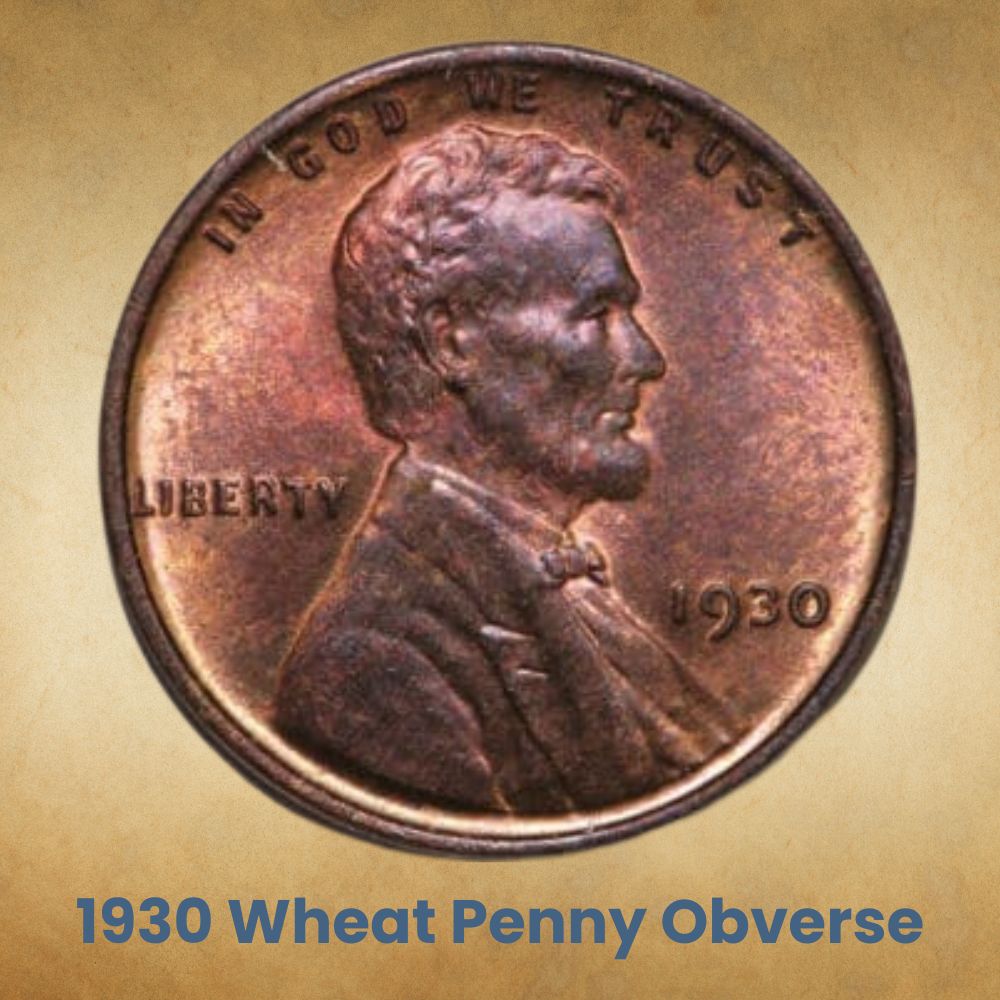
The obverse (heads side) of the 1930 Wheat Penny has the right-facing profile of Abraham Lincoln, the 16th President of the United States. On the right of the coin, at chest level, you’ll find the mint mark and mint date. The legend In God We Trust runs along the rim above his head while the legend Liberty is on the left, behind his back. VDB is on the shoulder cut-off.
The Reverse of the 1930 Wheat Penny
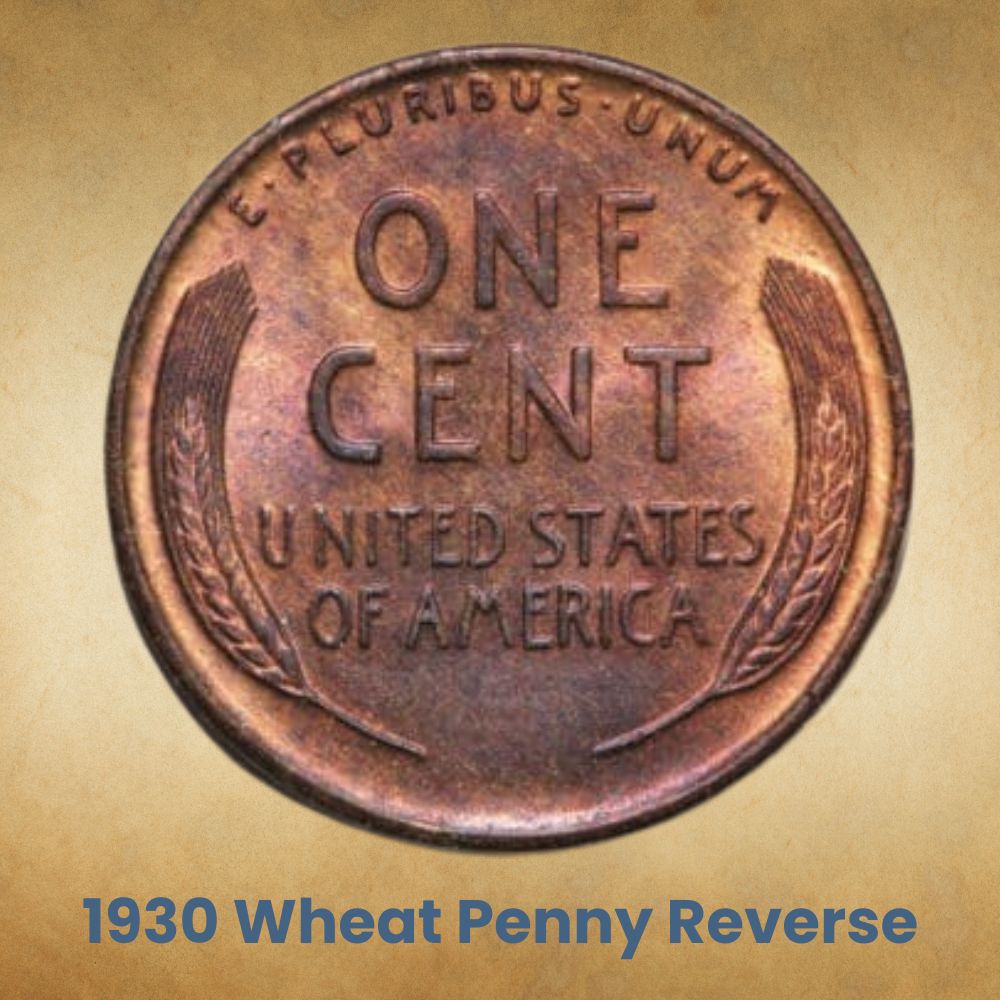
The reverse (tails side) of the 1930 Wheat Penny has two stalks of durum wheat lying close to the rims of the coin, and framing the words on the coin. At the top, it reads E Pluribus Unum, going from one tip of the wheat stalks to the other. Below that is the denomination, One Cent, in a larger font. And below that is the mid-sized legend United States of America.
Other Features of the 1930 Wheat Penny
In 1930, the Wheat Penny was 95% copper mixed with 5% zinc or tin to harden the metal for minting. Sometimes, both these base metals were combined for added strength. The coin had plain sides without reeds and weighed 3.11g. It measured 19.05mm in diameter and can be color-graded as RD for red, RB for reddish-brown, or BN for brown. RD is the best grade.
Related Posts: 19 Most Valuable Wheat Penny Worth Money
Is a 1930 Wheat Back Penny Worth Anything?
As recently as two years ago, you could get over $30,000 for a 1930 Wheat Back Penny in high grades. But today, even an MS 67 will only get you $1,500 to $2,000. That’s not a bad return on a 1-cent coin, but it’s still much lower than 2020. You could try waiting until 2030 to cash in on those 100th-anniversary prices. Or maybe you’ll get lucky and find an MS 68+!
Why is the 1930 Penny Rare?
1930 was the start of the Great Depression. There wasn’t a lot of money to go around and most people were living off the bread line, so it’s unlikely that anyone was keeping pennies. The bulk of minted coins probably stayed in bank vaults, got melted down for bullion, or recycled at the mint. Plus, that was 90 years ago, so you’re unlikely to find any in circulation.
